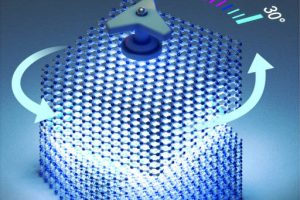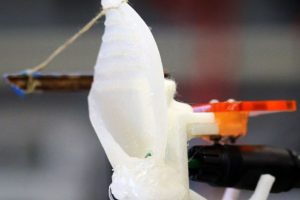The UK Business Secretary, Kwasi Kwarteng, has appointed Indro Mukerjee as the new CEO of Innovate UK, an organisation seeking to help develop the UK innovation and drive investment in research and development. Specifically, he will be responsible for developing the UK’s innovation capability, driving investments in research and development (R&D) and technologies of the future. However, the appointment is ...
Research
The latest electronics research news from within the industry and universities from around the world.
Look to dragonflies for better drones
Flapping-wing drones are likely to look more and more like insects as their performance increase, according to researchers at the University of South Australia who have made a detailed study of dragonfly flight to improve the design of drones. “Dragonflies are supremely efficient in all areas of flying,” said UniSA professor Javaan Chahl. “They can turn quickly at high speeds ...
Imec realises 18.6% efficient near transparent perovskite solar cell
Solliance partners TNO, imec/EnergyVille and the Eindhoven University of Technology, realized a 18.6% efficient highly near infrared transparent perovskite solar cell. When combined in a four terminal tandem configuration with an efficient Panasonic crystalline silicon (c-Si) cell or with a Miasolé flexible CIGS cell, delivers new record power conversion efficiencies of 28.7% and 27.0%, respectively. Tandem technology offers a viable ...
Compostable plastic invented at Lawrence Berkeley
Scientists at Lawrence Berkeley National Laboratory have designed an enzyme-activated compostable plastic which can be broken down by household tap water or soil composts into reusable small molecules, called monomers, in just a few days or weeks. Most biodegradable plastics are made of either polylactic acid (PLA) or polycaprolactone (PCL) which take months to break down and then only into ...
UV modulation by twisting crystal films
Films of the two-dimensional material hexagonal boron nitride can be used to control light emission from materials, according to the Singapore-MIT Alliance for Research and Technology (Smart). The phenomenon involves the creation of ‘Moiré superlattices’ as two films are rotated with respect to one-another, and works at room temperature with films made from stacks of atoms around 100nm high – considered bulk materials ...
Particle physics maths rescues laser array mode locking
How can anyone persuade an array of lasers to emit a single-mode coherent beam? was the question being asked by a team of US researchers. “One seemingly straightforward method to achieve a high-power single-mode laser is to couple multiple identical single-mode lasers together to form a laser array,” said University of Pennsylvania scientist Liang Feng. “Intuitively, this laser array would ...
Graphcore joins sparse computing group
Graphcore has joined a three year, €2.6 million, EU project called SparCity to develop algorithms and tools for sparse computing – where the matrices to be stored or manipulated have more zeros than not (pictured). Sparse computing is seen as a useful approach to machine learning and data analytics where its opposite – dense computing – is slow and inefficient ...
Space instrument spurns stepper for brushed dc motor
BAMMsat-on-BEXUS is an attempt to create a miniaturised bio-lab compatible with 3U CubeSats, run by academics and students from Cranfield University and the University of Exeter. “Researching the effects of microgravity and radiation in on-ground facilities has technical constraints that can add complexity to data interpretation,” said project head and Cranfield PhD student Aqeel Shamsul. “However, in-flight experiments come with their ...
Bat ear bio-mimicry locates sound source to half a degree
A single twanged rubber bat ear, backed by artificial intelligence, is enough to locate the direction from which a sound arrived to within half a degree, according to researchers at Virginia Tech. “I have long admired bats for their uncanny ability to navigate complex natural environments based on ultrasound and suspected that the unusual mobility of the animal’s ears might ...
Haptic touch display activated by LEDs
LEDs could be used to deform and vibrate a haptic touch display, according to researchers at Korea’s Electronics and Telecommunications Research Institute (ETRI). Demonstrating the mechanism, the team made a 3 x 3 matrix with nine 10 x 10mm vibrating units (touchels perhaps?). It involves a plastic bi-morph layer – the two-dimensional polymer equivalent of a bi-metallic strip – in this case, ...
 Electronics Weekly Electronics Design & Components Tech News
Electronics Weekly Electronics Design & Components Tech News









